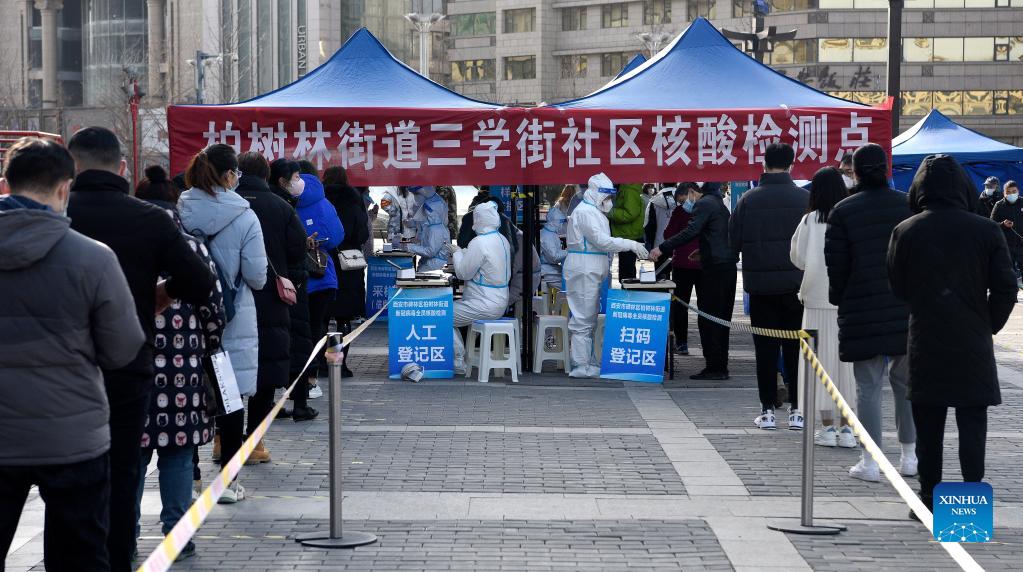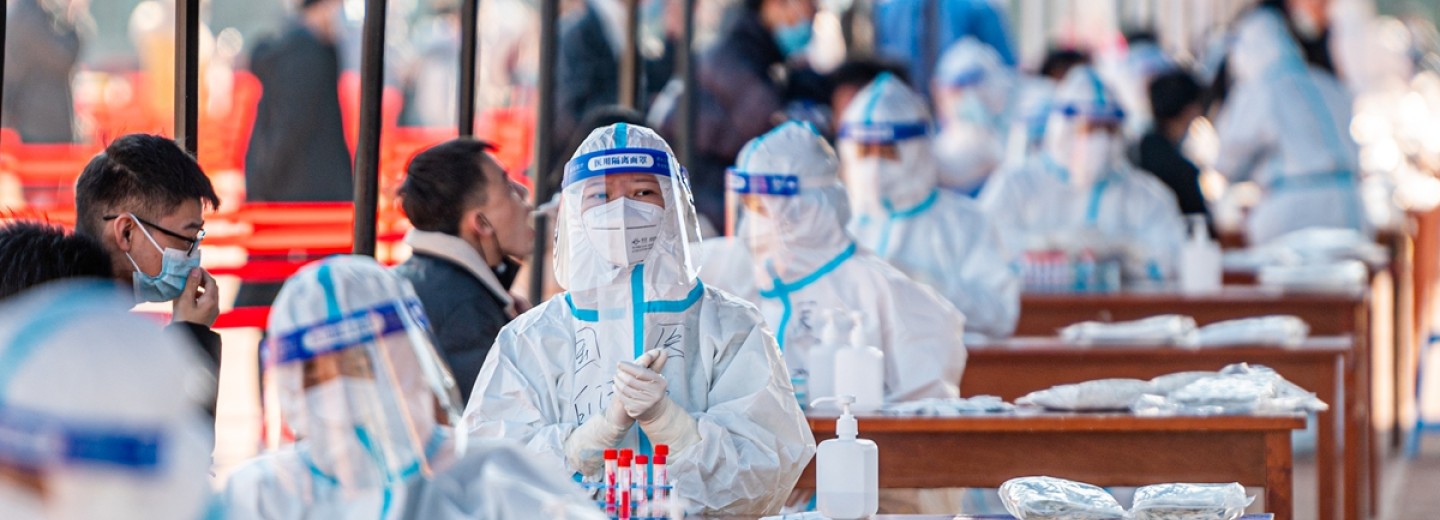China News 24th January 2022
This week the news is all about COVID and the way in which cities and countries have dealt with the epidemic. Our first story highlights the cultural difference between the West and China in the way in which each handles the pandemic.
The discussions between China and the West have their own cause, but they are also a bit exaggerated, because they regard anti-epidemic measures as a competition between China and the United States. Different ideological camps are fighting. Political leaders in both China and the West have also used their own anti-epidemic achievements and opponents’ setbacks, consciously or unintentionally, to publicize the superiority of their own systems and demonstrate that they can better protect people’s health, lives and human rights.
However, what kind of anti-epidemic strategy a country adopts and what it can achieve is not only limited by the system, but also restricted by geographical, economic and social, historical and cultural conditions, and each has its own difficulties and cannot be directly compared. For example, China’s medical system is underdeveloped, and there is a deep fear of illness and death among Chinese people, so it has adopted a “zero” strategy. Similarly, Western culture values individual rights. In some states in the United States, there are still many people who refuse to be vaccinated, and the authorities are powerless.

For China, how to make the official anti-epidemic methods more humane and more precise is a big problem; how to exit from the “zero” policy is an even bigger problem. There will be the Winter Olympics soon this year and the 20th National Congress of the Communist Party of China in the autumn. There is no room for mistakes, so will the strict external prevention and control be maintained for another year? China’s top leader has not gone abroad for two years. How long will this situation last?
The big test of this epidemic is not over yet, and the approach to the finish line is the key to determining the outcome. In the whole process, everyone has their own homework, and others can refer to their practices, but they cannot copy them, and their grades are also their own.
Source: zaobao.com.
Our second story is about Xi’an, the latest city to have experienced the epidemic in a major way. In this case, the news outlets in China have been highly critical of the way in which the Xi’an authorities have handled its epidemic.

In just over 30 days, the city of Xi’an in Shaanxi Province fought a tough battle against COVID. On December 9, 2021, a local epidemic broke out in Xi’an; on December 23, the authorities began to adopt “closure of the city” to prevent the spread of the epidemic; on December 31, a total of 1,451 new confirmed cases were added in the city. Only on January 5, the “inflection point” finally appeared. It is difficult for many people to imagine that, when the country has two years of experience in epidemic prevention and the foreshadowing of Wuhan’s closure, Xi’an, the largest city in Northwest China, has such an unsatisfactory performance in epidemic prevention and control. How did Xi’an go through these more than 30 days? What local governance lessons should we learn from this?
The source of the current round of epidemic in Xi’an was an inbound flight from Islamabad, Pakistan to Xi’an on December 4, 2021, and the first locally confirmed case was reported on December 9, 2021. But up to December 30, the authorities had not figured out how the epidemic transmission chain was formed. This shows that there are obvious deficiencies in the investigation work.
The reason is inseparable from Xi’an’s obvious shortcomings in scientific prevention and control. The size of the COVID team in Xi’an is only 300 people, and it is difficult to meet the transfer needs of a mega city like Xi’an with a permanent population of 12.95 million. In Shanghai, with a permanent population of 24.87 million, the size of the COVID team was over 3,100 as early as the beginning of 2021. According to this ratio, the team in Xi’an should have at least 1,000 people. As a result, it is not only difficult to quickly identify the transmission chain of the epidemic, but those workers must be overloaded and physically and mentally exhausted.
According to some netizens in Xi’an, the process of testing for all staff in Xi’an was rather chaotic. Many people gathered, there was no minimum safe distance, people were next to each other, and there were no special personnel to maintain order. People were waiting in line for nucleic acid testing, smoking cigarettes, chatting, queue jumping. Many people did not even wear masks, which in turn brings the risk of cluster infection.
Testing in Xi’an Aerospace Xinghe Park, meant queuing for five hours in the cold wind until dark. As a result, hundreds of people were told that the test could not be completed due to the collapse of the nucleic acid system. Another nucleic acid collection point was notified that the samples that had been collected were invalid due to the collapse of the system and needed to be collected again.
What’s even more devastating is that the health code system in Xi’an also broke down. Buses and subways were unable to produce green codes and nucleic acid test reports, and people queued up to manually register their identities one by one; Some people choose to walk to the work unit, but they found that they cannot enter the office building without a pass, and then they walk home, and they cannot enter the community.” It is puzzling that even a basic health code system cannot be maintained well in a town with a population of 10 million.
Due to the chaos and loopholes in the above-mentioned epidemic prevention and control, the virus continued to spread. In desperation, Xi’an decided to close the city on December 23, 2021. This is another mega-city with a population of 10 million in China that has adopted lockdown measures following the closure of Wuhan on January 23, 2020. As the experience of Wuhan’s closure of the city nearly two years ago has shown, the closure of the city is really the last resort in the process of epidemic prevention. Once the city is closed, it will inevitably shut down all economic activities. Studying, living, and seeing a doctor have had a serious impact, especially for some moonlight people who lack savings, migrant workers living in group rental housing, and small businesses and hawkers.

At first, the authorities stipulated that each family can go out to purchase once every two days, which once eased the anxiety of the public. However, the relevant regulations were abolished for no apparent reason. Many families were caught off guard and suddenly fell into the dilemma of lack of food and vegetables. As a result, 3,000 people in Xi’an left messages, many of them complaining. There is a shortage of food and vegetables, and there are even complaints about “don’t eat unless necessary” and “drinking the northwest wind”.
In addition, the problem of medical treatment after the closure of the city is also more prominent. From time to time, there have been reports on the Internet that some patients were sent to the doctor without a car or received by the hospital, and even high-risk pregnant women who were in labour openly asked for help, which made people sympathetic and worried. A friend from Xi’an told the author that his friend’s father was suffering from pancreatic cancer and needed to be hospitalized recently. However, because private cars are prohibited from traveling, and the government has not organized public vehicles, they can only go to the hospital by taxi. However, due to the limited number, it takes time It takes a long time to reach the hospital. The problem is, from the perspective of epidemic prevention, taxis are not necessarily safer than private cars.
In the face of the sudden virus, Xi’an did not make an emergency plan because of the serious shortcomings of epidemic prevention and control, so that the epidemic continued to spread and the problem became more and more serious. However, effective control of the epidemic cannot be just a simple nucleic acid test for all employees and a city closure, but requires very comprehensive and meticulous scientific arrangements, which can not only clear the chain of epidemic transmission, early detection, early isolation, and early treatment, but also reduce the flow of people. It is necessary to do a good job in ensuring people’s livelihood – whether it is urban villages and migrant workers stranded on construction sites, people without savings, citizens facing shortage of living materials, and patients in need of medical treatment, there should be proper resettlement.
Worked on the article:

Wanlikhang





